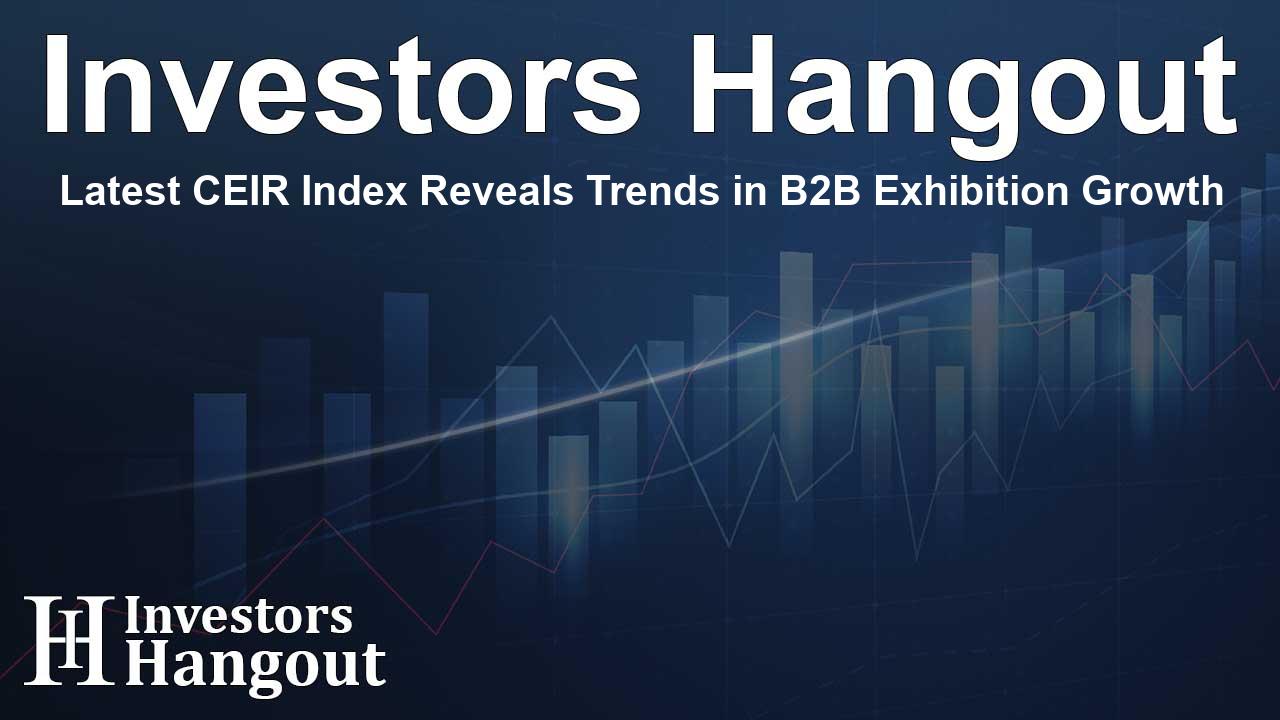Latest CEIR Index Reveals Trends in B2B Exhibition Growth

Exploring the Latest CEIR Index Results
The Center for Exhibition Industry Research has recently shared its findings regarding the performance of the U.S. business-to-business (B2B) exhibition industry for the second quarter of 2024. This report highlights key metrics that demonstrate a minor slowdown following a robust start in early 2024. The total index value dropped to 87.7 from a record high of 92.3 in the previous quarter, indicating a decline of 2.3 percentage points when compared to the same quarter in 2023.
A Look at Event Attendance
Performance metrics indicate that exhibition attendance has not met expectations, resulting in the second-quarter value being 12.3% lower than the same period in 2019. This shows a continuity of challenges, especially when analyzed alongside a 10% decline noted in Q2 2022. The latest index showcases that while the overall exhibition performance is slipping, a notable 44.3% of the events evaluated have actually exceeded their pre-pandemic performances, a significant upturn from only 20.5% in Q2 2023.
Understanding Cancellation Trends
In addressing the challenges faced, it's important to highlight the cancellation rates for in-person events. Fortunately, the cancellation rate remains stable at 1.0%, mirroring last year's statistics and showing a marked improvement from the previous year where cancellation rates were at 2.2% in Q2 2022.
Expert Insights on Economic Outlook
Adam Sacks, President of Tourism Economics, shared insights on the economic landscape affecting the exhibition industry. He stated, "Economic growth is expected to be slower next year, but strong household financial health, an anticipated rise in business investments, and abating inflation should create a beneficial environment for moderate growth within the exhibition sector." This reflects an overall cautious optimism about a gradual recovery.
Breaking Down Q2 2024 Metrics Performance
Within the CEIR Total Index, there are four critical components, with Net Square Feet (NSF) showing the strongest recovery, currently only 6.6% behind its 2019 levels. Meanwhile, the number of attendees is 12.6% lower than 2019 metrics. Exhibitor participation inches behind, at 13.9% below, while inflation-adjusted real revenues suffer the most, lagging by 15.9% compared to the pre-pandemic period.
Comparative Analysis with Q1 2024
While the Q2 2024 performances are lower than those noted at the start of the year, the hierarchy of metrics remains unchanged, suggesting that NSF continues to outperform other categories, while real revenues are still struggling to catch up.
Context of U.S. Economic Trends
The overall economic environment aligns with the CEIR Index results, indicating a general slowdown without clear signs of a recession. Consumer confidence levels have decreased, and business morale has fluctuated due to recent events causing unwarranted panic.
Understanding Employment Trends
Recently, the unemployment rate had a slight increase to 4.3% in July, up from 3.5% the previous year, though it still remains historically low. This uptick coincides with an increase in labor force participation, which should reduce future wage pressures and inflation concerns.
GDP Growth Signals Positive Projections
In Q2 2024, GDP growth accelerated to 2.8%, a good indicator of economic health, and suggests positive momentum for the latter half of the year. While potential global economic challenges remain, local indicators hint at a bright future for exhibition recovery.
The Role of Consumer Spending
Consumer spending has shown strength, particularly in June, where it likely rose nearly 2.0% on an annualized basis. This upward trend is notable despite a lower gas price impact and challenges from external factors like cyberattacks affecting auto sales.
Future of Travel and Hotel Demand
While airport checkpoint volumes are surpassing pre-pandemic levels, hotel demands have stabilized approximately 2.0% below those levels. This can largely be attributed to rising international travel among U.S. citizens despite lower international visitor numbers.
The CEIR and Its Commitment to Industry Advancement
CEIR remains dedicated to advocating for the exhibition industry, producing resources that help stakeholders adapt to changing consumer needs and competition. Their commitment continues to serve as a foundation for improving both business performance and strategic positioning.
Frequently Asked Questions
What does CEIR stand for?
CEIR stands for the Center for Exhibition Industry Research.
What was the total index value for Q2 2024?
The total index value for Q2 2024 was reported at 87.7.
How does current attendance compare to pre-pandemic levels?
Current exhibition attendance is approximately 12.3% below pre-pandemic levels.
What is the projected economic outlook for exhibitions?
The outlook suggests moderate growth driven by stable household balance sheets and business investment.
Why is consumer spending significant in this context?
Increased consumer spending is essential for sustaining economic momentum and supporting the recovery of exhibition events.
About Investors Hangout
Investors Hangout is a leading online stock forum for financial discussion and learning, offering a wide range of free tools and resources. It draws in traders of all levels, who exchange market knowledge, investigate trading tactics, and keep an eye on industry developments in real time. Featuring financial articles, stock message boards, quotes, charts, company profiles, and live news updates. Through cooperative learning and a wealth of informational resources, it helps users from novices creating their first portfolios to experts honing their techniques. Join Investors Hangout today: https://investorshangout.com/
Disclaimer: The content of this article is solely for general informational purposes only; it does not represent legal, financial, or investment advice. Investors Hangout does not offer financial advice; the author is not a licensed financial advisor. Consult a qualified advisor before making any financial or investment decisions based on this article. The author's interpretation of publicly available data shapes the opinions presented here; as a result, they should not be taken as advice to purchase, sell, or hold any securities mentioned or any other investments. The author does not guarantee the accuracy, completeness, or timeliness of any material, providing it "as is." Information and market conditions may change; past performance is not indicative of future outcomes. If any of the material offered here is inaccurate, please contact us for corrections.